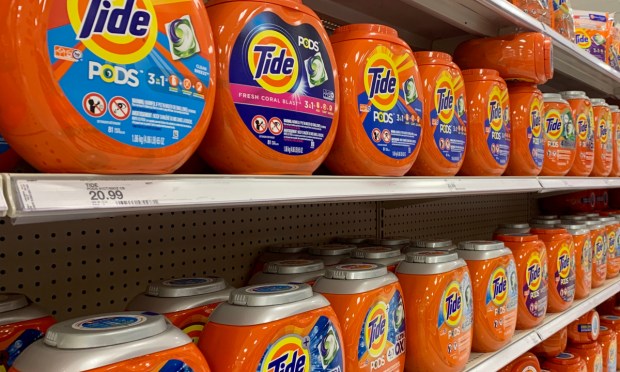P&G: Inflation Isn’t Keeping US Consumers From Buying More Expensive Brand Names

It turns out Procter & Gamble, the company which makes household staples like Tide detergent, Bounty paper towels, and Crest toothpaste, made more money last quarter because it raised prices on its household items, showing that even with inflation, people are still buying the company’s higher-priced products.
During its latest quarterly earnings report on Tuesday (Jan. 23), the company also revealed that in addition to price hikes driving most of the sales growth, customers also purchased more items from P&G’s beauty and health and family care product lines.
According to PYMNTS, Procter & Gamble has consistently observed this trend quarter after quarter, showcasing the company’s enduring strength in the household products sector.
Read also: P&G Says 6% Sales Increase Underpins Consumer Spending Resilience Amid Inflation
These findings also align with the latest Consumer Price Index data released Jan. 11. Basic expenses, especially shelter, became more costly toward the end of the year. The overall numbers for December indicated a 0.3% increase, up from 0.1% in November. Over the past 12 months, prices rose by 3.4%, surpassing the 3.1% rate observed in November.
Read more: Inflation’s Pace Quickens in December, Led by Housing Costs
P&G by Segment
In the beauty segment, P&G reported a 1% increase in organic sales, with skin and personal care experiencing a decline attributed to lower sales and volume of SK-II cosmetics, while hair care saw a significant increase driven by higher pricing and volume growth in North America.
The grooming segment witnessed a 9% increase in organic sales, fueled by higher pricing, a premium product mix, and volume growth.
Healthcare segment organic sales increased by 2%, with oral care seeing a mid-single-digit increase due to higher pricing and a premium product mix. Personal healthcare, however, fell by low single digits, attributed to volume decreases in respiratory products, partially offset by increased pricing.
Fabric and home care reported a 6% increase in organic sales, driven by higher pricing, a favorable product mix, and volume growth in fabric care and home care.
In the baby, feminine, and family care segment, organic sales increased by 3%, with varying performance across categories, including unchanged sales in baby care, a mid-single-digit increase in feminine care, and a mid-single-digit increase in family care primarily due to volume growth.
P&G by the Numbers
“We delivered strong results in the second quarter, enabling us to raise our core EPS [earnings per share] growth guidance and maintain our top-line outlook for the fiscal year,” said Jon Moeller, chairman of the board, president and CEO of Procter & Gamble, in a press release.
“We remain committed to our integrated strategy of a focused product portfolio of daily use categories where performance drives brand choice, superiority — across product performance, packaging, brand communication, retail execution and consumer and customer value — productivity, constructive disruption and an agile and accountable organization. The P&G team’s execution of this strategy has enabled us to build and sustain strong momentum. We have confidence this remains the right strategy to deliver balanced growth and value creation.”
In the second quarter of fiscal year 2024, Procter & Gamble reported a 3% increase in net sales, totaling $21.4 billion. Organic sales, excluding foreign exchange and acquisitions/divestitures, grew by 4%. Diluted net earnings per share were $1.40, down 12% from the previous year due to a non-cash impairment of the Gillette intangible asset.
However, core net earnings per share increased 16% to $1.84. The company generated an operating cash flow of $5.1 billion, with net earnings amounting to $3.5 billion. Adjusted free cash flow productivity was 95%, and Procter & Gamble returned $3.3 billion to shareholders through dividend payments and share repurchases.
